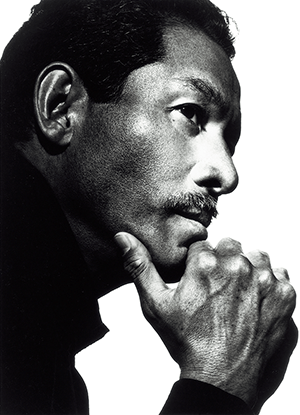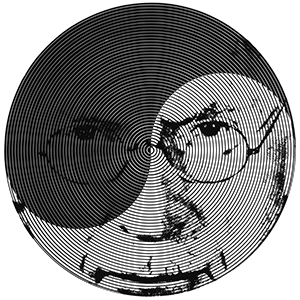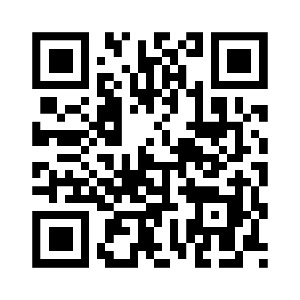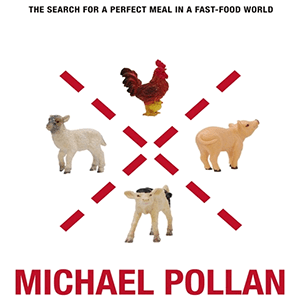Issey Miyake (b. 1938) is a Japanese fashion designer. He is known for his technology-driven clothing designs, exhibitions and fragrances. Miyake was born in Hiroshima; as a seven year-old, he witnessed and survived the nuclear bomb. He studied graphic design at the Tama Art University in Tokyo, graduating in 1964. After graduation, he worked in Paris and New York City. Returning to Tokyo in 1970, he found the Miyake Design Studio. In the late ’80s, he began to experiment with new methods of pleating that would allow both flexibility of movement for the wearer as well as ease of care and production.
This eventually resulted in a new technique called ‘garment pleating’ and in 1993’s ‘Pleats Please’ in which the garments are cut and sewn first, then sandwiched between layers of paper and fed into a heat press, where they are pleated. The fabric’s ‘memory’ holds the pleats and when the garments are liberated from their paper cocoon, they are ready-to wear. He had a long friendship with Austrian-born pottery artist Dame Lucie Rie. She bequeathed to him her substantial collection of ceramic and porcelain buttons, which he integrated into his designs and presented them in new collections.
Issey Miyake
The Red Book
The Red Book, also known as Liber Novus (Latin for New Book), is a 205-page manuscript written and illustrated by Swiss psychiatrist Carl Gustav Jung between approximately 1914 and 1930, which was not published or shown to the public until 2009. It contain some of his most personal material, and during the sixteen years he worked on it, Jung developed his theories of archetypes, collective unconscious, and individuation. Until 2001, his heirs denied scholars access to the book.
read more »
Carl Jung
Carl Gustav Jung [yoong] (1875 – 1961) was a Swiss psychiatrist, an influential thinker, and the founder of analytical psychology. Jung is often considered the first modern psychologist to state that the human psyche is ‘by nature religious’ and to explore it in depth. Though not the first to analyze dreams, he has become perhaps one of the most well known pioneers in the field of dream analysis. Although he was a theoretical psychologist and practicing clinician, much of his life’s work was spent exploring other areas, including Eastern and Western philosophy, alchemy, astrology, sociology, as well as literature and the arts.
He considered the process of individuation necessary for a person to become whole. This is a psychological process of integrating the conscious with the unconscious while still maintaining conscious autonomy. Individuation was the central concept of analytical psychology. Many pioneering psychological concepts were originally proposed by Jung, including the Archetype, the Collective Unconscious, the Complex, and synchronicity. A popular psychometric instrument, the Myers-Briggs Type Indicator (MBTI), has been principally developed from Jung’s theories.
Operation Mincemeat
Operation Mincemeat was a successful British deception plan during World War II. As part of Operation Barclay, a plan to cover the intended invasion of Italy from North Africa, Mincemeat helped to convince the German high command that the Allies planned to invade Greece and Sardinia in 1943 instead of Sicily, the actual objective.
This was accomplished by persuading the Germans that they had, by accident, intercepted ‘top secret’ documents giving details of Allied war plans. The documents were attached to a corpse deliberately left to wash up on a beach in Punta Umbría in Spain.
read more »
Ephemeralization
In 1938 American engineer, Buckminster Fuller coined the term ephemeralization to describe the increasing tendency of physical machinery to be replaced by what is now called software. It describes the ability of technological advancement to do ‘more and more with less and less until eventually you can do everything with nothing.’ Fuller’s vision was that ephemeralization will result in ever-increasing standards of living for an ever-growing population despite finite resources. The concept is a counterargument to Malthusian philosophy, where that the dangers of population growth (famine, disease, etc.) would preclude endless progress towards a utopian society.
Fuller uses Henry Ford’s assembly line as an example of how ephemeralization can continuously lead to better products at lower cost with no upper bound on productivity. Another example is found in length measurement technologies: ruler > rod > rope > telescope > radio. The technological progression is a continuing increase in length-measuring ability per pound of instrument, with no apparent upper limit according to Fuller. However, increasing system complexity and information overload make it difficult and stressful for the people who must control the ephemeralized systems. This can negate the advantages of ephemeralization.
QR Code
A QR Code is a matrix barcode (or two-dimensional code), readable by QR scanners, mobile phones with a camera, and smartphones. The code consists of black modules arranged in a square pattern on white background. The information encoded can be text, URL or other data. Common in Japan, where it was created by Toyota subsidiary Denso-Wave in 1994, the QR code is one of the most popular types of two-dimensional barcodes.
QR is the abbreviation for Quick Response, as the creator intended the code to allow its contents to be decoded at high speed. The maximum information a QR code can represent is about 4300 alphanumeric characters or just under 3 kilobytes.
The Omnivore’s Dilemma
The Omnivore’s Dilemma: A Natural History of Four Meals is a nonfiction book by Michael Pollan published in 2006.
As omnivores – the most unselective eaters – humans are faced with a wide variety of food choices, resulting in a dilemma. Pollan investigates industrial food, organic food, and foraged food.
read more »
Masters of Beef Advocacy
The Masters of Beef Advocacy (MBA) is an industry-funded program that trains college students to promote agribusiness. Since its launch in March 2009, the MBA has trained nearly 3,000 students and farmers to spread the ‘positive beef message.’ Daren Williams, the communications director for the National Cattlemen’s Beef Association, helped start the MBA with $240,000 from the Beef Checkoff program.
The MBA program is a self-directed online training program designed to equip beef producers and industry allies with the information they need to be everyday advocates for the beef industry. MBA candidates will be required to complete six courses in beef advocacy, including: Modern Beef Production, Animal Care, Beef Safety, Beef Nutrition, and Environmental Stewardship.
Checkoff
Checkoff organizations collect funds, sometimes called checkoff dollars, from producers of a particular agricultural commodity and uses these funds to promote and do research on the commodity. The organizations must promote their commodity in a generic way, without reference to a particular producer. These organizations are responsible for familiar American advertising campaigns, including ‘Milk Does a Body Good,’ ‘Got Milk?’, ‘Pork. The Other White Meat,’ ‘The Incredible, Edible Egg,’ and ‘Beef: It’s What’s for Dinner.’
read more »











